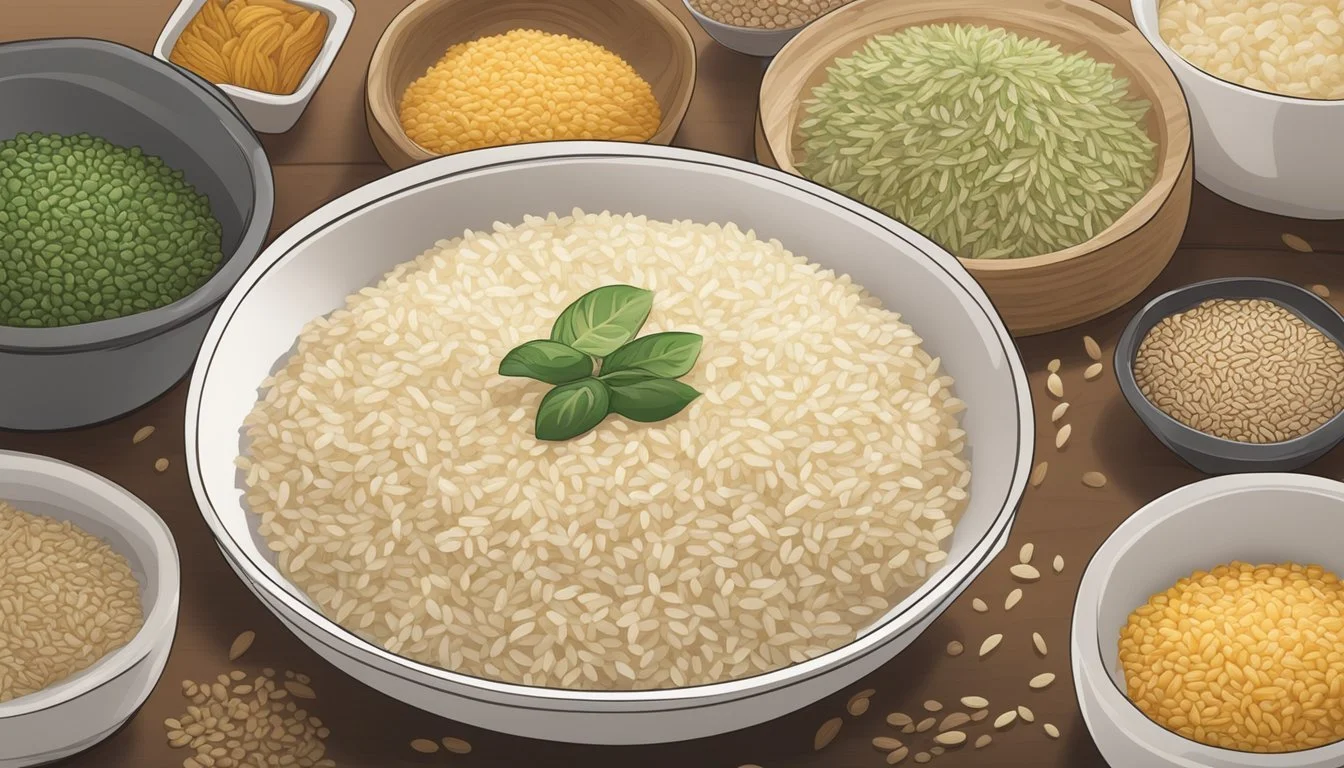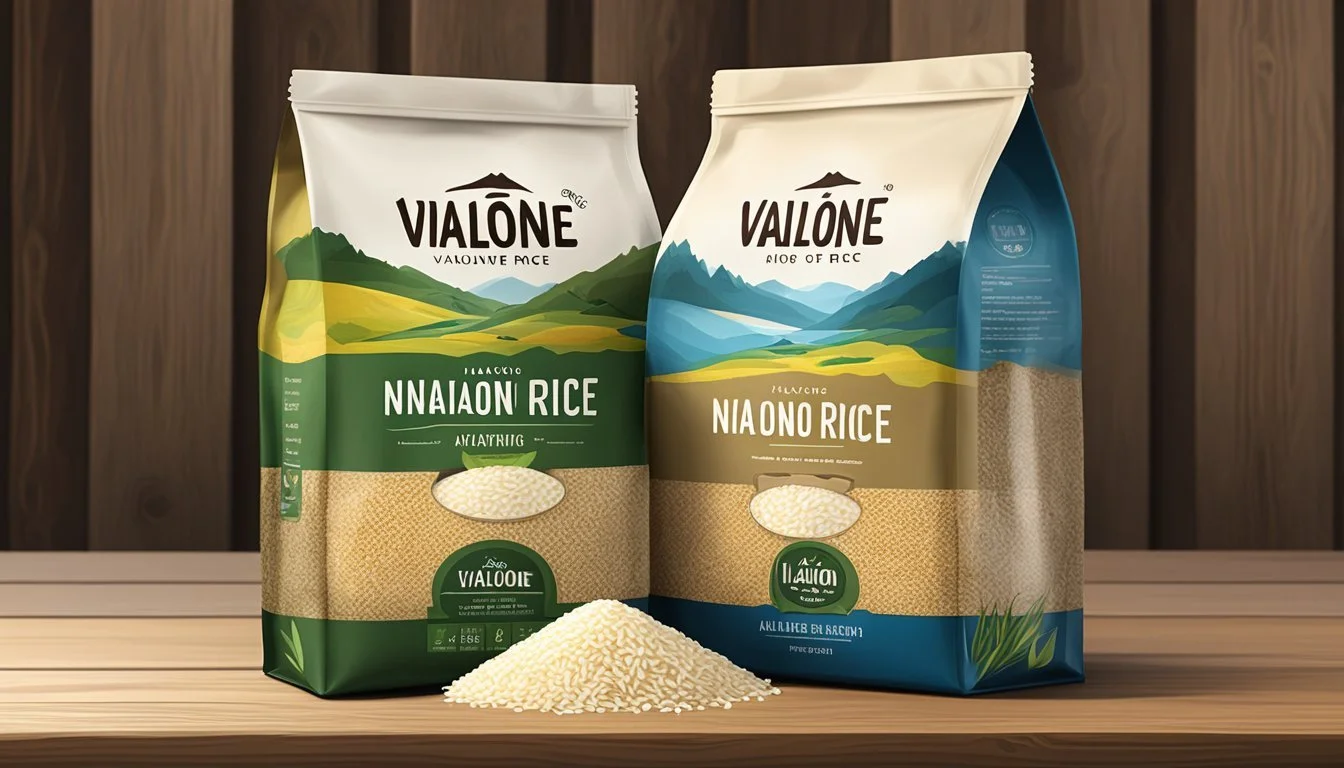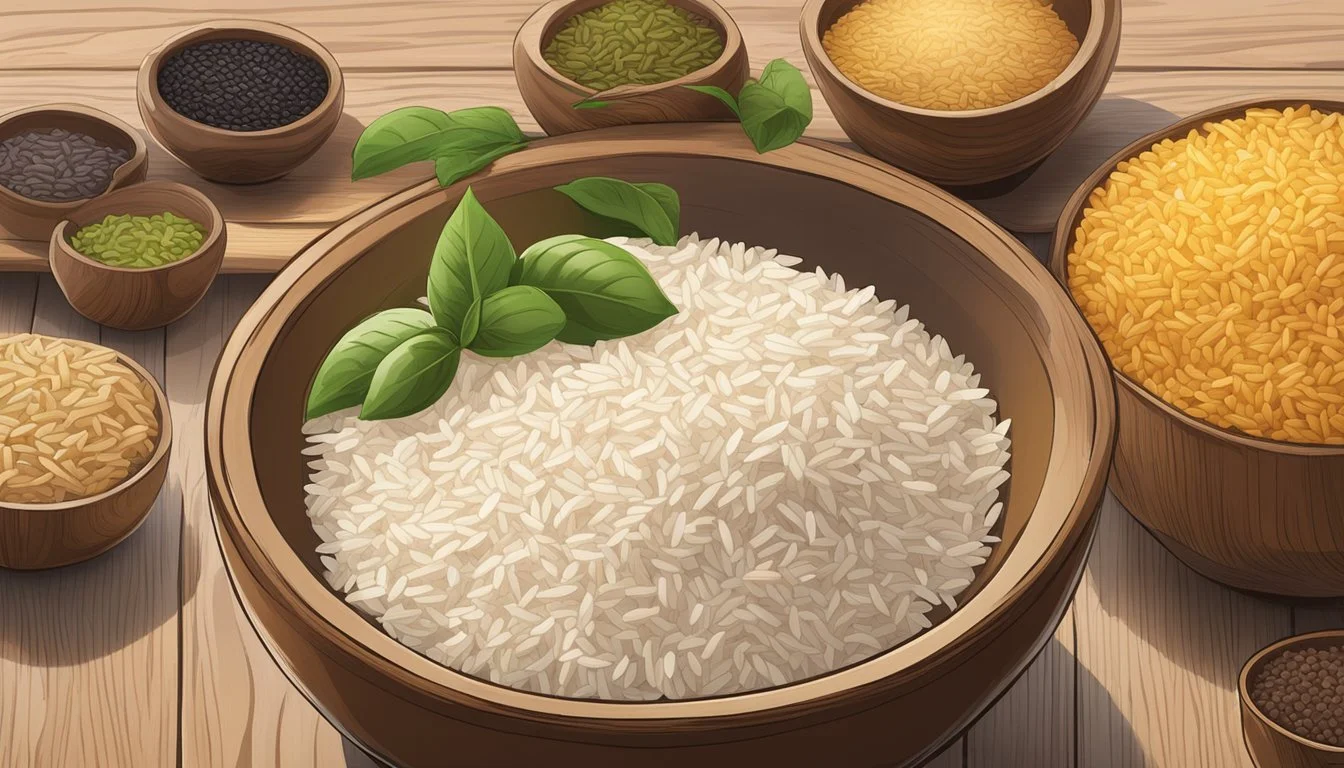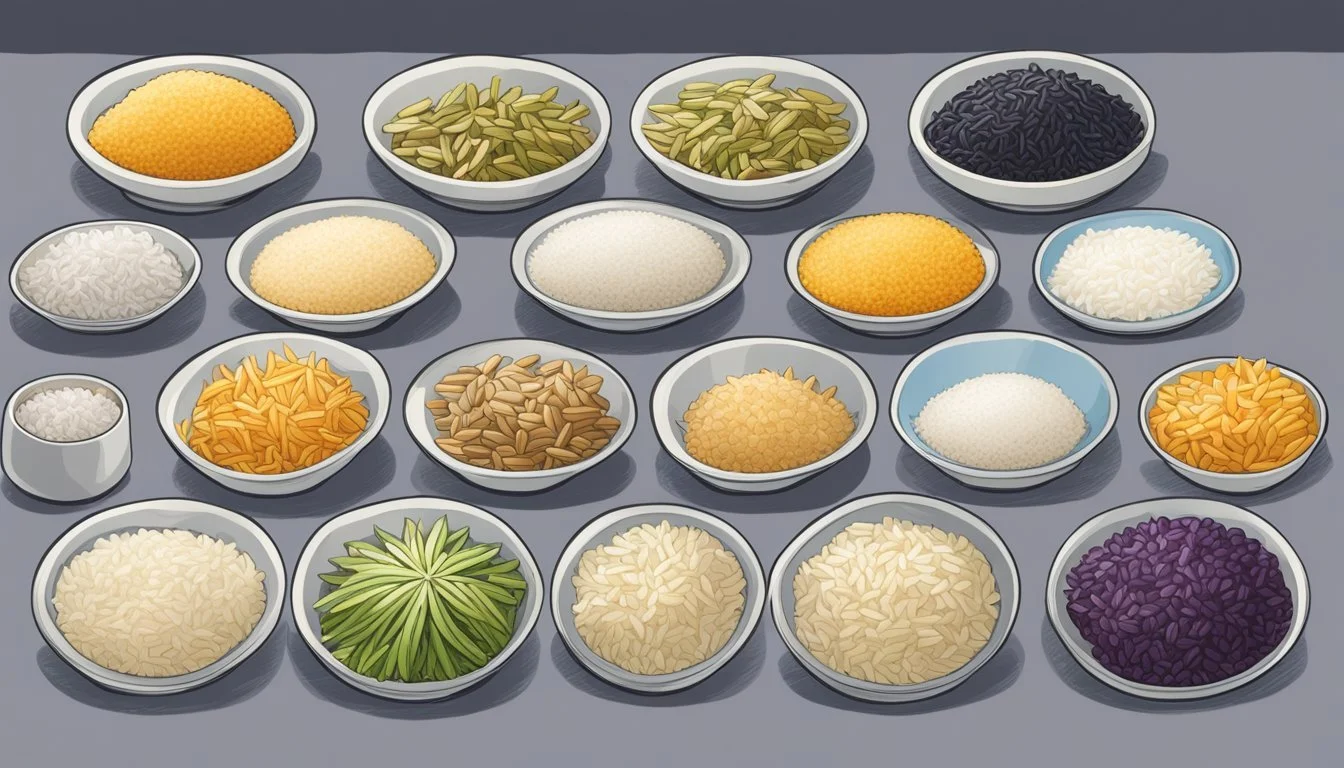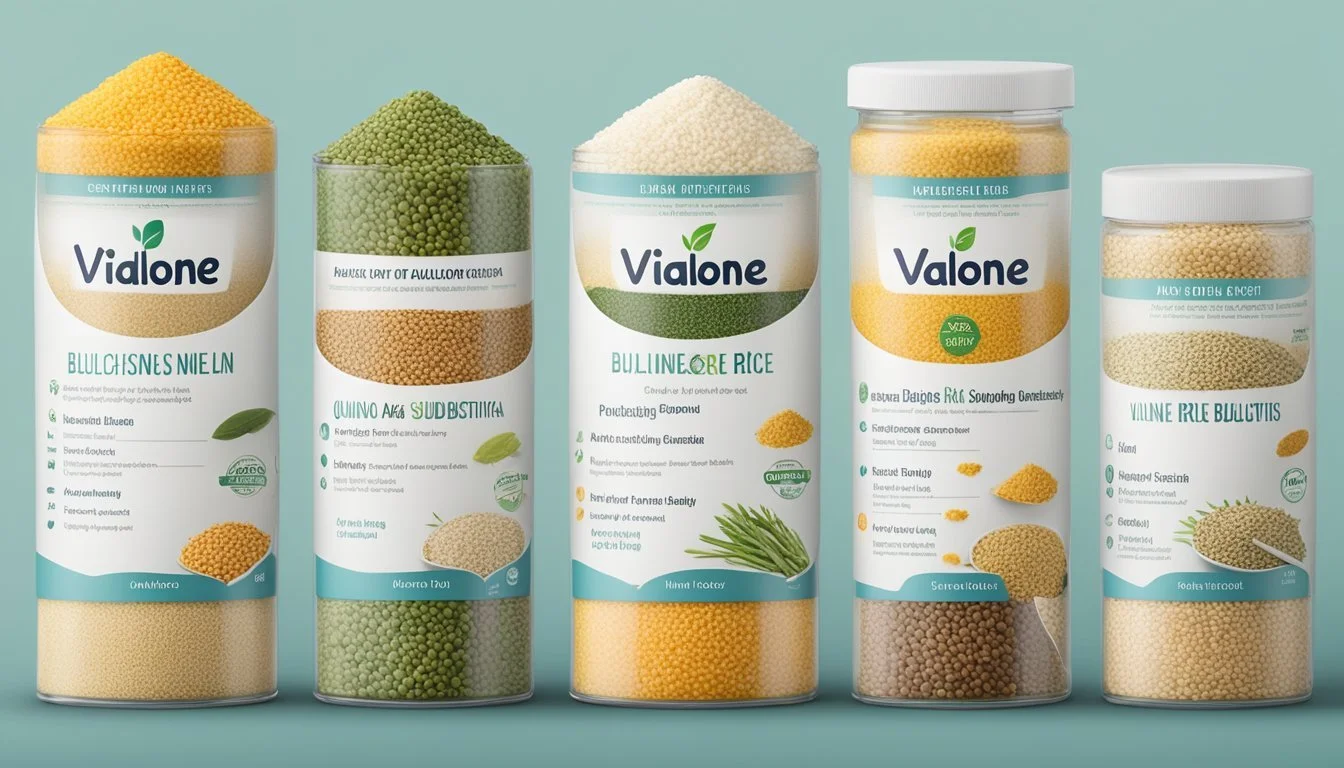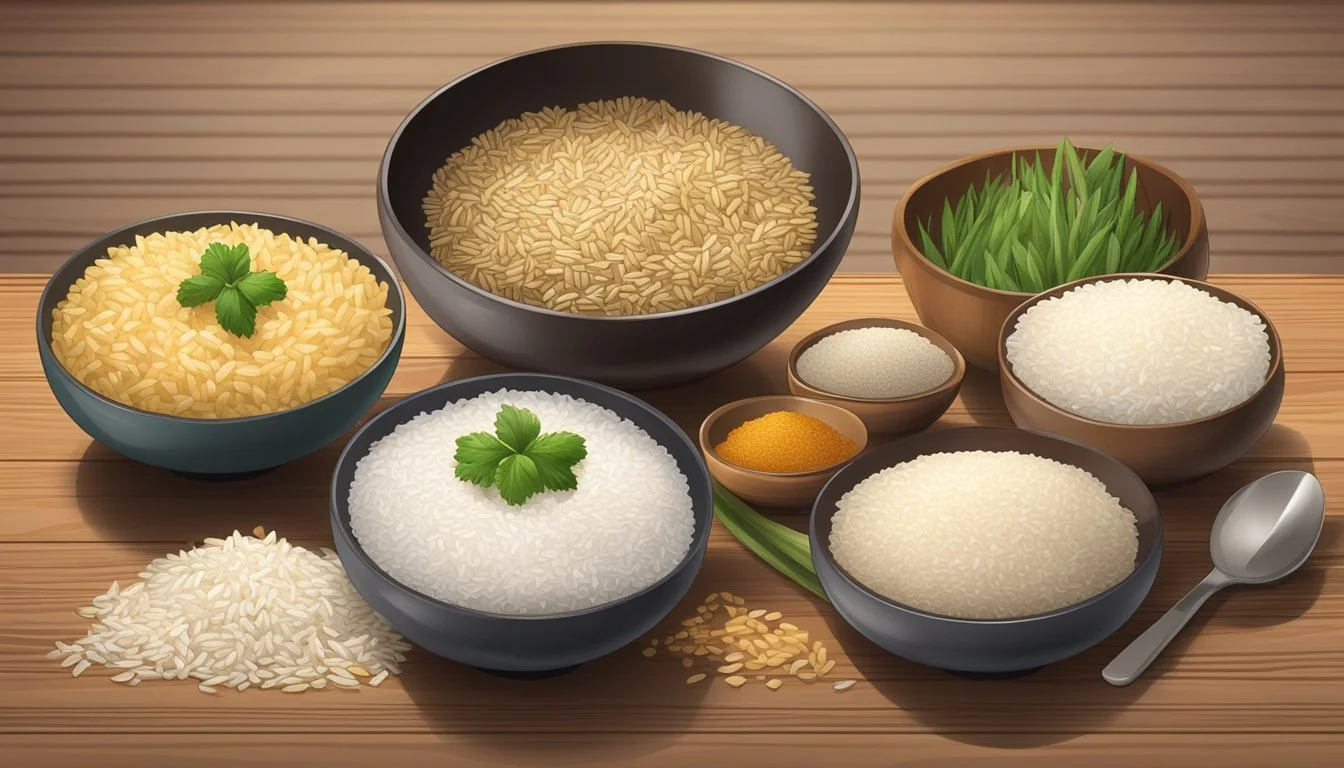Vialone Nano Rice Substitutes
Top Alternatives for Your Recipes
For those who appreciate Italian cuisine, Vialone Nano rice is a cherished ingredient, especially for making creamy risottos. Its high starch content allows it to absorb liquids well, yielding a rich, velvety texture. Yet, if you find yourself without this specific rice, several suitable substitutes can still help you achieve that perfect dish.
Arborio rice is a notable alternative to Vialone Nano due to its similar creamy texture and ability to absorb liquid efficiently. Grown primarily in the Po Valley, Arborio is well-known for its role in traditional risotto recipes. For a slightly different flavor profile, Carnaroli rice, often dubbed the "caviar of rice," provides a firmer texture while still delivering the desired creaminess.
Exploring options beyond Italian rice varieties, sushi rice serves as an interesting substitute. Though primarily used in Japanese cuisine, its short-grain nature allows it to mimic the creamy outcomes essential for recipes that typically call for Vialone Nano. Each of these alternatives offers unique qualities, ensuring that your dish retains its intended richness and texture.
Understanding Vialone Nano Rice
Vialone Nano rice, a prized variety from Verona, Italy, is celebrated for its starchy content and culinary versatility, especially in risottos. This section explores its key characteristics and culinary applications.
Characteristics of Vialone Nano
Vialone Nano rice is a semi-fine variety with roundish, medium-sized grains. The rice is a crossbreed between Vialone and Nano rice varieties, first developed in 1937.
Texture and Starch Content: The high amylopectin content in Vialone Nano makes it uniquely suited for creating creamy dishes. This starch structure allows the grains to absorb liquids well while releasing starch, contributing to a rich, creamy texture without becoming overly mushy.
Flavor: Vialone Nano rice has a subtle, nutty flavor that enhances the taste of the ingredients it's cooked with. This ability to absorb flavors makes it popular not just in Italian cuisine but also in various culinary traditions that value depth and richness in dishes.
Culinary Uses
Vialone Nano is particularly favored for making risotto in the Veneto region. Its ability to hold its shape while absorbing liquid makes it ideal for creating the desired creamy consistency of this dish.
Cooking Methods: To achieve the best results, it should be stirred constantly and cooked with gradually added hot broth. This technique allows the starches to be released slowly and evenly, producing a silky texture.
Versatility: Beyond risotto, Vialone Nano can be used in side dishes and salads. Its strong structural integrity ensures that it remains firm, providing a pleasing bite. It's also excellent in soups and as a base for seafood or vegetable dishes.
By understanding these characteristics and uses, one can appreciate why Vialone Nano is a staple in many kitchens.
Important Factors in Substituting Rice Varieties
Selecting the right rice substitute involves careful consideration of starch content, grain shape, texture, and flavor profile. These factors ensure that the dish maintains the desired consistency, creaminess, and taste.
Starch Content and Creaminess
Starch is crucial for achieving the creamy texture characteristic of dishes like risotto. Rice varieties high in amylopectin, such as Arborio or Vialone Nano, release starch slowly during cooking.
This gradual release creates the desired creaminess. Calrose rice, for example, is another medium-grain variety suitable for risottos. It releases starch at a moderate rate, offering a smooth and creamy texture.
Proper cooking techniques also help manage starch release, ensuring the dish remains creamy without becoming mushy.
Grain Shape and Texture
The shape of the rice grain influences both texture and cooking behavior. Short-grain varieties like Arborio or Vialone Nano retain a firm, al dente texture even after prolonged cooking. This is important for dishes that require a specific mouthfeel.
Long-grain alternatives such as basmati may not be ideal for risotto. They tend to stay separate and fluffy rather than creamy. Medium-grain options, like Calrose, can be a better substitute for achieving the desired consistency.
Grain shape directly impacts how the rice absorbs liquid and maintains its structure.
Flavor Profile
The flavor of the rice impacts the overall taste of the dish. Arborio and Vialone Nano have a subtle flavor that doesn't overpower other ingredients. This allows the dish’s primary flavors to shine through.
Basmati rice, with its light nutty flavor and floral aroma, provides a different taste experience. While it works well in many recipes, it may alter the flavor balance of traditional risottos.
Selecting a rice variety with a compatible flavor profile is essential for maintaining the integrity of the dish.
Top Rice Substitutes for Vialone Nano
When it comes to substituting Vialone Nano rice, several alternatives can replicate its creamy texture and flavorful characteristics. Here are some top choices that work well in various dishes.
Carnaroli Rice: The Closest Match
Carnaroli rice is often hailed as the king of risotto rice. Originating from the Pavia, Novara, and Vercelli regions of Italy, it has a high starch content essential for achieving that creamy texture.
Carnaroli's firm grain retains its shape during cooking, making it an ideal choice for recipes requiring a chewy texture. Its subtle, nutty flavor complements a wide variety of ingredients, enhancing the overall experience of the dish.
Arborio Rice: A Popular Alternative
Arborio rice, named after the town of Arborio in the Po Valley, is another popular substitute. Known for its slightly wider and longer grains, Arborio also has a high starch content, which contributes to a creamy consistency.
The chewy texture that Arborio provides makes it a go-to option for creamy risottos and other similar dishes. Its availability in many grocery stores also makes it an accessible substitute for Vialone Nano.
Baldo Rice: Versatile Choice
Baldo rice is a semi-fine variety that strikes a balance between chewy and creamy textures. Originating from Northern Italy, it has medium-to-large grains that absorb flavors well, making it suitable for a wide range of recipes.
Baldo rice's characteristics make it versatile, able to be used in risottos, desserts, and other dishes requiring an absorbent, flavorful grain. Its nutty undertones add an extra depth of taste to any preparation.
Calrose Rice: Accessible Substitute
Calrose rice is a medium-grain variety primarily grown in California. It is known for its ability to absorb flavors, although it has a slightly lower starch content compared to traditional risotto rices.
Despite this, Calrose can still achieve a satisfactory creamy texture, making it a practical substitute. It's widely available in North American markets, offering a convenient option for those seeking an alternative to Vialone Nano.
Alternative Grains and Seeds
When looking for alternatives to Vialone Nano rice, it's important to explore various grains and seeds that provide diverse textures, flavors, and nutritional benefits. Key substitutes include barley, farro, and quinoa, each offering unique culinary and health advantages.
Barley: Nutrient-Rich Option
Barley, particularly pearled barley, is highly nutritious and versatile. It resembles white rice but is packed with more fiber and protein. One cup of pearled barley offers approximately 8 grams of fiber and 5 grams of protein, making it a substantial substitute.
Barley’s high fiber content promotes digestive health, while its protein supports muscle repair and growth. In cooking, barley retains a slightly chewy texture and absorbs flavors well, making it suitable for various dishes beyond just risotto.
Farro: Ancient Grain Choice
Farro, an ancient grain derived from farro wheat, is prized for its nutty flavor and hearty texture. This grain is rich in nutrients including fiber, protein, magnesium, and B-vitamins. Like barley, farro provides a chewy consistency and can enhance the texture and nutritional profile of many recipes.
When using farro as a substitute for Vialone Nano rice, it’s best to use pearled farro as it cooks faster and has a creamier consistency, ideal for dishes like risotto. Its robust flavor pairs well with a variety of vegetables and meats.
Quinoa: Gluten-Free Substitute
For those requiring a gluten-free option, quinoa is an excellent choice. Quinoa is actually a seed but is often used as a grain. It is rich in fiber, protein, and essential amino acids, providing a complete protein source.
Quinoa cooks quickly, offering a light but slightly nutty flavor that suits many dishes. Its texture is tender yet firm, making it an effective substitution in recipes that traditionally use Vialone Nano rice, and it integrates well into salads, soups, and casseroles due to its versatility.
By integrating these alternative grains and seeds, one can add variety, texture, and nutritional value to their diet while exploring flavors beyond traditional Vialone Nano rice.
Non-Rice Alternatives for Distinctive Textures
For those seeking unique textures beyond rice, several non-rice options can create satisfying and flavorful dishes. These alternatives bring their own distinct qualities, allowing for diverse culinary experiences.
Orzo Pasta: A Pasta Alternative
Orzo pasta, small and rice-shaped, is a versatile ingredient often used to replace rice. This pasta alternative can be cooked al dente, providing a satisfying bite. It's perfect for creamy dishes, soups, and salads.
When using orzo in recipes, its ability to absorb flavors while maintaining a firm texture makes it ideal. Cooking orzo is straightforward; boil it in salted water for about 8-10 minutes until it reaches the desired doneness.
Couscous: Quick-Cooking Solution
Couscous, particularly the larger Israeli couscous, offers a quick-cooking alternative. Made from semolina flour, it has a mild flavor and a slightly chewy texture.
To prepare couscous, simply pour boiling water over it and let it steam for a few minutes. This ingredient is excellent in salads, as a side dish, or in stews. Its rapid cooking time makes it a convenient choice for busy cooks.
Bulgur Wheat: A Middle-Eastern Twist
Bulgur wheat, a staple in Middle Eastern cuisine, is known for its earthy, nutty aroma. It provides a chewy texture and is rich in fiber and nutrients, making it a healthy choice.
Cooking bulgur is easy; soak it in hot water for about 10-15 minutes until it softens. Bulgur works well in tabbouleh, pilafs, and as a stuffing for vegetables, adding a distinct flavor and texture to dishes.
Experimenting with Different Rice Types
Choosing the right rice type can profoundly impact the risotto experience. Exploring various rice types can offer unique flavors and textures, creating new and exciting culinary possibilities.
Basmati and Jasmine Rice: Aromatic Varieties
Basmati Rice and Jasmine Rice are known for their distinct aromatic qualities. While traditionally used in Indian and Southeast Asian cuisines, they can be interesting alternatives for risotto. Basmati’s long grains and fluffy texture result in a risotto with a lighter, less creamy consistency, yet it offers a fragrant and slightly nutty flavor.
Jasmine Rice, with its soft and slightly sticky finish, brings a floral aroma to the dish. Though it lacks the high starch content needed for a classic creamy risotto, it provides a unique taste. Experimenting with these varieties can create a risotto that is both aromatic and flavorful, albeit with a different texture profile.
Sticky Rice: For a Different Kind of Creaminess
Sticky Rice, also known as Glutinous Rice, can be an unconventional but intriguing substitute for Vialone Nano rice. Known for its high starch content, when cooked, it becomes gelatinous and sticky, offering a different kind of creaminess to risotto.
Though traditionally used in Asian desserts and savory dishes, Sticky Rice can create a risotto with a distinct texture that clings together. This rice's nature allows it to absorb flavors well, making it suitable for richly flavored risottos. However, it is important to note that it lacks the distinct al dente bite desired in traditional risotto.
Brown Rice: Healthier and Heartier
Brown Rice provides a healthier alternative without sacrificing flavor. Unlike white rice varieties, brown rice retains its bran layer, adding more fiber, vitamins, and minerals. This gives the risotto a heartier, nutty flavor that complements robust ingredients like mushrooms or root vegetables.
Cooking brown rice takes more time compared to traditional risotto rice, and it requires additional liquid to achieve the right texture. Its distinctively chewy texture offers a different mouthfeel, but adapting cooking techniques can yield satisfying results. For health-conscious cooks, brown rice risotto can be a nutritious and flavorful twist.
Cooking Techniques for Substitute Grains
When using substitute grains for Vialone Nano rice, specific cooking techniques ensure the desired creamy consistency. Each grain requires a different approach to achieve textures similar to that of Vialone Nano.
Carnaroli and Arborio Rice
Carnaroli and Arborio are excellent substitutes. These varieties need the traditional Italian risotto technique:
Sauté onions in butter or olive oil.
Add the rice and toast until edges are translucent.
Gradually add hot liquid (broth or water), stirring frequently.
Cook until grains are al dente.
Basmati and Jasmine Rice
For lighter dishes:
Rinse the grains to remove excess starch.
Cook using the absorption method.
Use a 1:1.5 ratio of rice to liquid.
Pearled Barley
To achieve the desired texture:
Rinse and soak barley for a few hours.
Sauté in butter.
Gradually add broth, stirring often.
Cook until a creamy consistency is achieved.
Quinoa
Ideal for pilafs or lighter dishes:
Rinse thoroughly to remove the bitter coating.
Use a 1:2 ratio of quinoa to water.
Bring to a boil, then simmer until liquid is absorbed.
Fluff with a fork.
Farro
For a hearty substitute:
Rinse and soak if required.
Use a 1:3 ratio of farro to water.
Simmer until grains are tender but chewy.
Use in salads or as a base for rice pudding or arancini.
Applying these techniques ensures that substitute grains achieve textures and consistencies perfect for various culinary applications.
Considering Dietary and Nutritional Aspects
When choosing a substitute for Vialone Nano rice, it is important to consider how different rice varieties compare in terms of fiber and protein content, glycemic index, and mineral and vitamin representation.
Fiber and Protein Content
Fiber and protein are critical components to assess in rice substitutes. Vialone Nano rice offers moderate amounts of both.
Fiber: Substitutes like brown rice and wild rice are typically higher in dietary fiber, which aids digestion and helps maintain stable blood sugar levels.
Protein: Quinoa, often used as a rice substitute, provides a complete protein source, meaning it contains all nine essential amino acids. In comparison, typical rice varieties may have varied protein levels, often lower than those found in quinoa.
Glycemic Index and Carbohydrate Quality
The glycemic index (GI) of rice affects how quickly its carbohydrates are absorbed into the bloodstream.
Glycemic Index: Vialone Nano rice has a moderate GI, making it suitable for balanced blood sugar levels. Substitutes like basmati or jasmine rice tend to have lower GIs compared to short-grain varieties.
Carbohydrate Quality: The quality of carbohydrates in the substitutes also matters. Brown rice and farro, for example, retain their bran and germ, providing higher nutrient density and slower digestion rates.
Mineral and Vitamin Representation
Evaluating the mineral and vitamin content is essential for a comprehensive nutritional profile.
Minerals: Iron and magnesium are essential minerals found in rice. Vialone Nano rice has a moderate mineral content, while substitutes like brown rice or farro often provide higher iron and magnesium levels.
Vitamins: B vitamins are crucial for energy metabolism and neurological functions. Quinoa and wild rice are notable for their elevated B vitamin levels, making them excellent substitutes.
Assessing these dietary and nutritional factors ensures that substitutes not only match the culinary characteristics of Vialone Nano rice but also support overall health and wellness.
The Final Word on Substituting Vialone Nano Rice
When seeking substitutes for Vialone Nano rice, several options are available that can maintain similar texture and flavor.
Arborio Rice is a popular choice. With its high starch content, it retains a creamy texture when cooked, similar to Vialone Nano.
Carnaroli Rice is another substitute, known for being slightly more starchy. It absorbs liquids well, creating a cohesive, creamy risotto.
Baldo Rice offers good versatility. Its firm texture makes it suitable for a variety of dishes, including risotto.
Comparison Table
Rice Variety Texture Flavor Cooking Characteristics Arborio Creamy Mild High starch, clings together Carnaroli Even creamier Rich Absorbs more liquid, less sticky Baldo Firm Neutral Less starchy, versatile
These substitutes can be used in equal amounts in recipes calling for Vialone Nano. Adjusting the liquid ratio might be necessary to achieve the desired consistency.

